Maeving RM1S Review: Inner and Outer City Commuter Tested
We’ve been out testing the new Maeving RM1S its natural habitat, London. Here’s how the new higher-speed electric commuter bike rides

Maeving is a British-owned motorcycle maker, based in, and building its bikes in, the historically important city of Coventry. Its latest machine, the Maeving RM1S, takes all of the good bits of the RM1, and adds a higher top-speed, without a cost in terms of range and offers similar recharging times.

We were in London to test the new bike, and while that didn’t mean we’d be scraping the footpegs of it on some pretty B-road, which is a shame, we would at least be getting a feel for the bike in the same way that a new owner would. We had about 40 miles to cover, including riding in Hoxton, around Regents Park, and a short squirt up the A12 to see how it handles some time on the dual carriageway.
What is the Maeving RM1S, and how does it differ to the RM1?
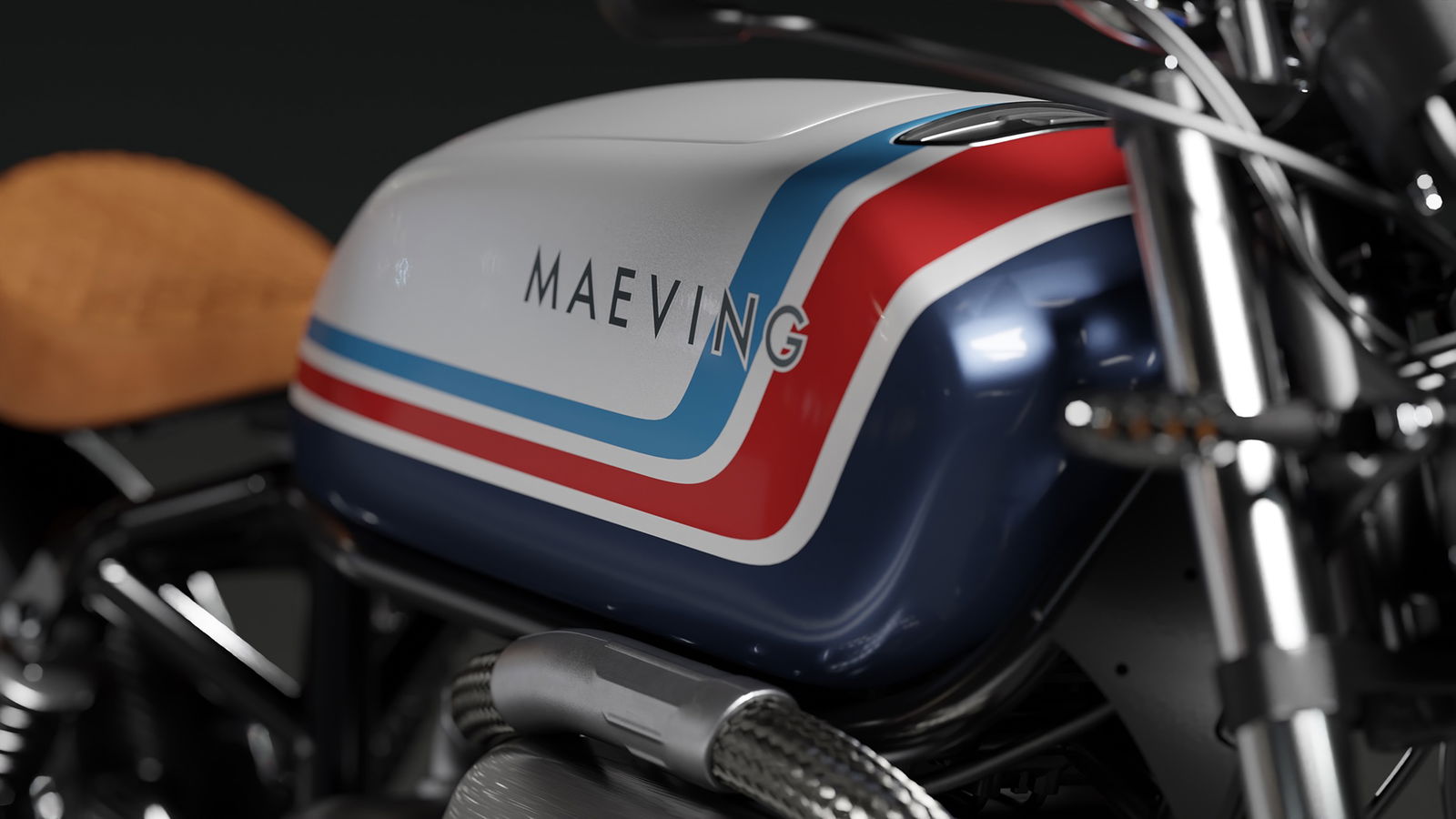
Maeving’s first bike was the RM1, a hugely popular inner-city electric motorcycle which regularly topped the sales charts as the best-selling battery-powered bike. It was also slightly limited, and with only a 45mph top speed, venturing out of the city and on to a B-road or dual carriageway would have been a daunting prospect.
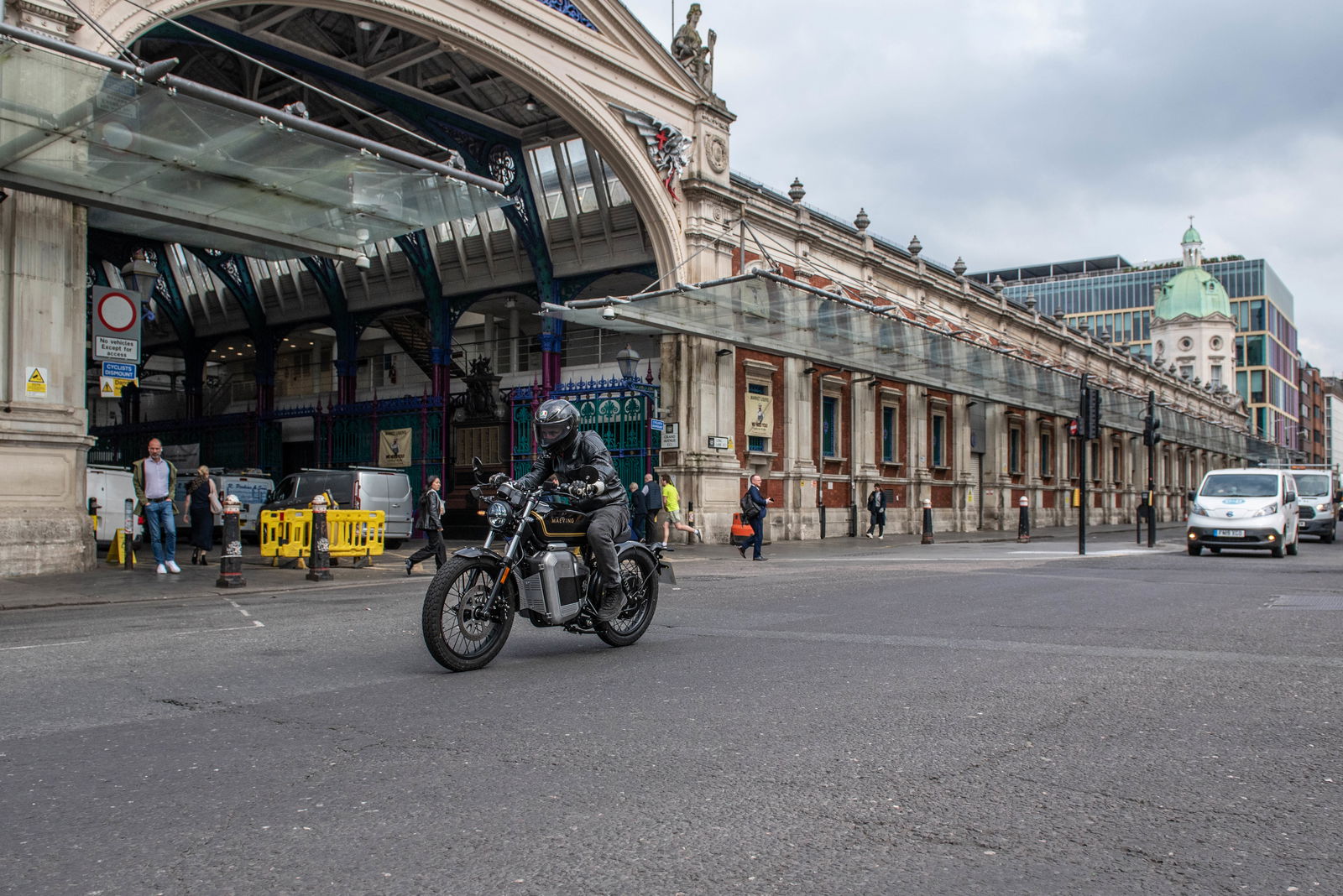
The RM1S changes that, and with a 70 mph top speed, it opens the door to Maeving ownership to those who might live in the suburbs of a large city like London, or those who need to travel along a dual carriageway to get to work.
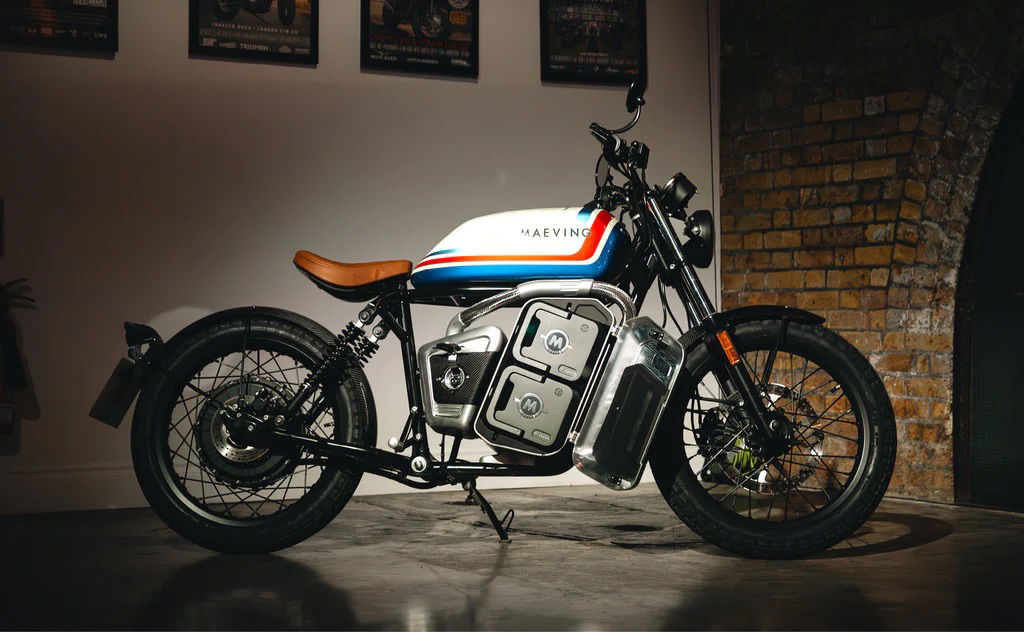
The dual batteries are still removable although can now be charged in the bike also
To enable this, Maeving have changed the batteries and motor and moved both batteries so they are located together beneath the top-tube of the frame. The ‘fuel tank’ (which on the RM1 stored the second battery) now becomes an expansive 10-litre storage compartment as a result of this repackaging.

It’s worth noting that, despite the higher top-speed (and double the power of the RM1 taking the RM1S to just under 15bhp/11kW), the claimed range remains the same at 80 miles. Recharging times are also good, and the batteries can go from 20 to 100 per cent in around four hours which is the same as the previous model. Maeving has also allowed this bike to be recharged with the batteries fitted in the bike, although you can still take them out to charge them if you want or need to.

What hasn’t changed about the bike is the styling, which can only be described as patriotically and unashamedly British on the RM1S just as on the original RM1. Look at one from a distance (and squint a bit) and you’d be hard-pressed to tell it's not some modern classic roadster or a genuine oil-dripper from back in the day.
Price, colours, and availability

The Maeving RM1S comes in at £7,495 for the base colour bikes and you can reserve one of the first edition bikes (as ridden) with a £500 deposit. These bikes benefit from carbon front and rear mudguards (which look like the mutt's nuts) and the carbon trim on the neat-looking battery box. There are seven base colours to choose from and two more premium options, the Vincent (as ridden by me) and the Gilbert (the white, red, and blue striped model). These two options are priced at £7,995 for the Vincent and £8,195 for the Gilbert.
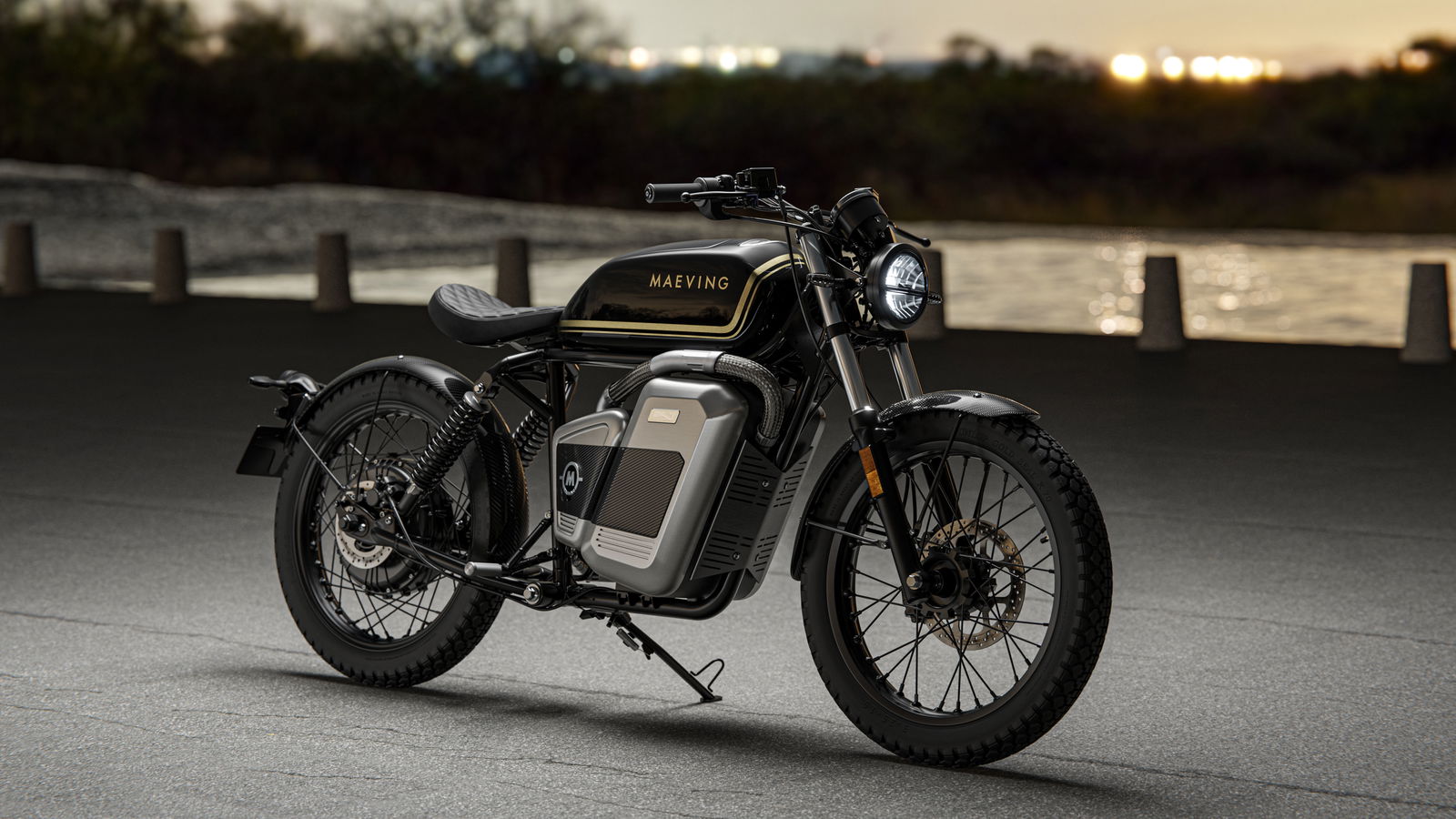
Maeving’s business model is Direct to Consumer (DTC) meaning no dealers or distributors. Instead, you simply click ‘buy’ on the website and your bike will be delivered to your door like a two-wheeled electric takeaway pizza. How very 2024!
What’s it like to ride
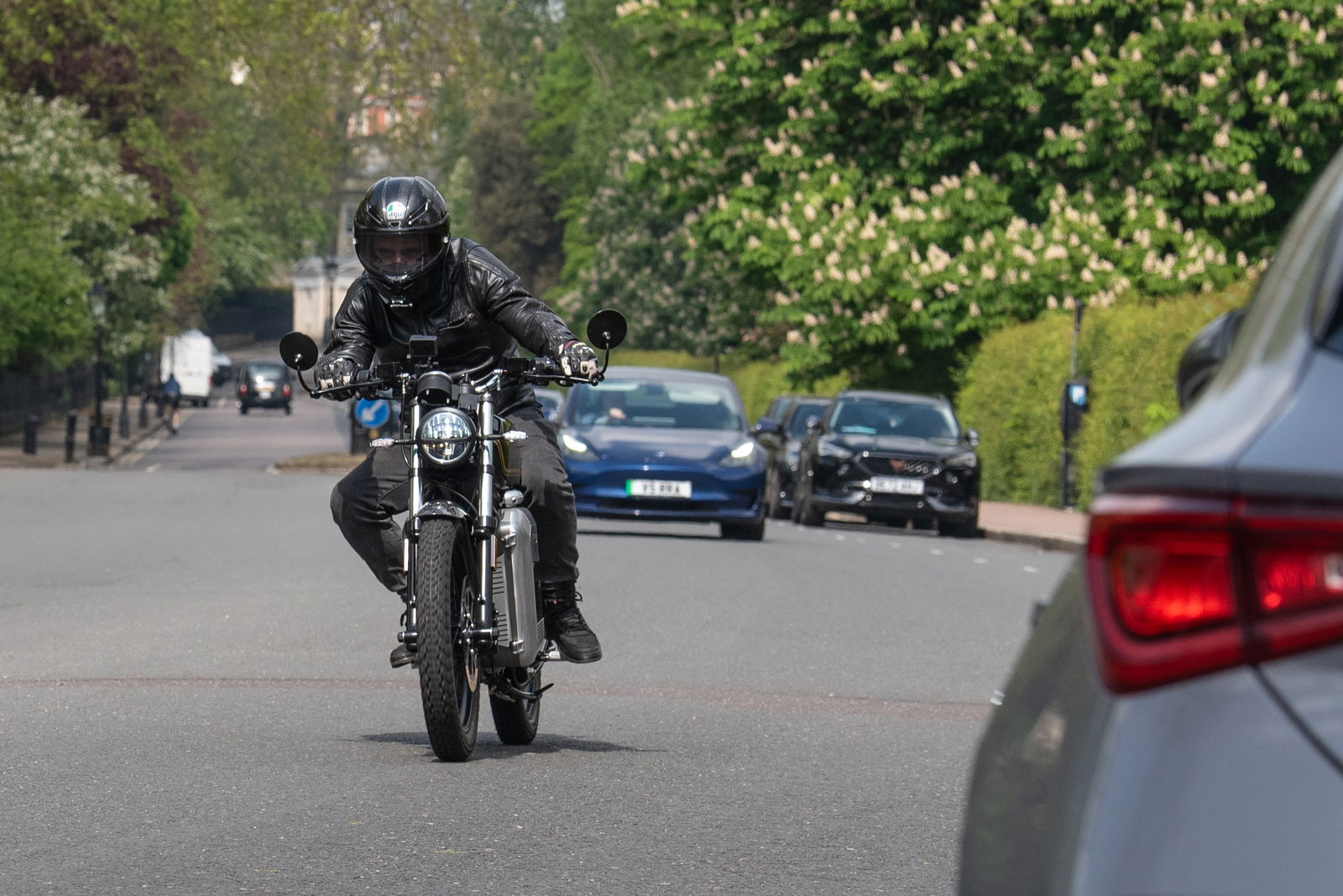
Having commuted in London for a number of years now, mostly on massive adventure tourers or 200bhp sports bikes, it was refreshing to hop on something small, light (133kg), and with an unintimidating 15bhp on tap. Before we could get anywhere near testing the new top-speed of the RM1S, we had some proper inner-city slicking to get out of the way, and as you’d expect from a bike designed for this type of riding, the Maeving holds up very well.
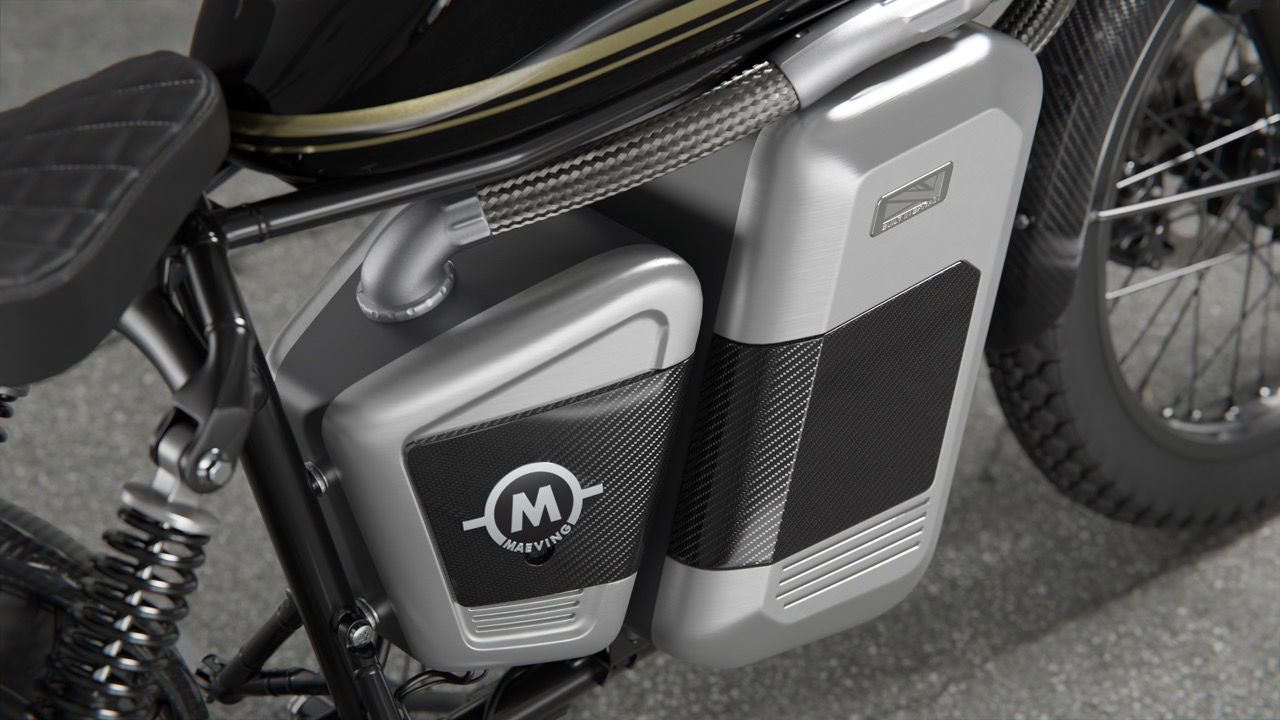
The low weight and centre of gravity mean effortless handling at low speed, and the 783mm seat height means that any rider, of any height can get both feet flat on the floor. It’s also got that distinctive electric bike delivery that makes short work of pulling away from lights quicker than all the four-wheeled stuff and without any fuss or bother. There are three riding modes you can pick from: Drive, Sport, and Eco - each features the same throttle mapping, just with a different top speed. Sport worked best for us but I did try the others out and they are easy to flick through on the fly using the button on the right handlebar.
There’s not much to say about the handling yet, it’s not like you can learn much from taking 90-degree turns every hundred yards, but with Regents Park not far away we might get a taste of that soon.

The carbon goodies are standard on the first edition bikes, after that they'll be optional
One thing I am liking is the build quality. Maeving poached a few staff from Triumph, and it shows. The build quality, fit and finish and overall feel of the bike are like nothing else in the electric sector. Maeving has also spent the cash on the areas that matter, like the carbon parts, paint and decals, wheels and machined battery casings. The only areas that I can see that they’ve looked to save some cash is in the switch gear and the brake levers. They are the only bits that look like they’ve come from the parts bin, and I’m okay with that. For one thing, they all work just fine, and secondly, for the majority of the people who will buy these bikes aren’t going to be bothered if a bike has an adjustable span and ratio brake lever.

And while I’m talking about the brakes, the system on the Maeving is extremely powerful. It’s a conventional front brake on the right handlebar, while the rear brake (on the left handlebar) is a combined braking system (CBS). It sends 60 per cent of the braking power to the rear wheel, and the rest to the front. And when I say extremely powerful, you really do have to be careful on the lever and even a solitary finger on the lever can summon up massive amounts of stopping power. It’s worth noting as there’s no ABS on the RM1S, especially in wet weather. This might be something to consider.
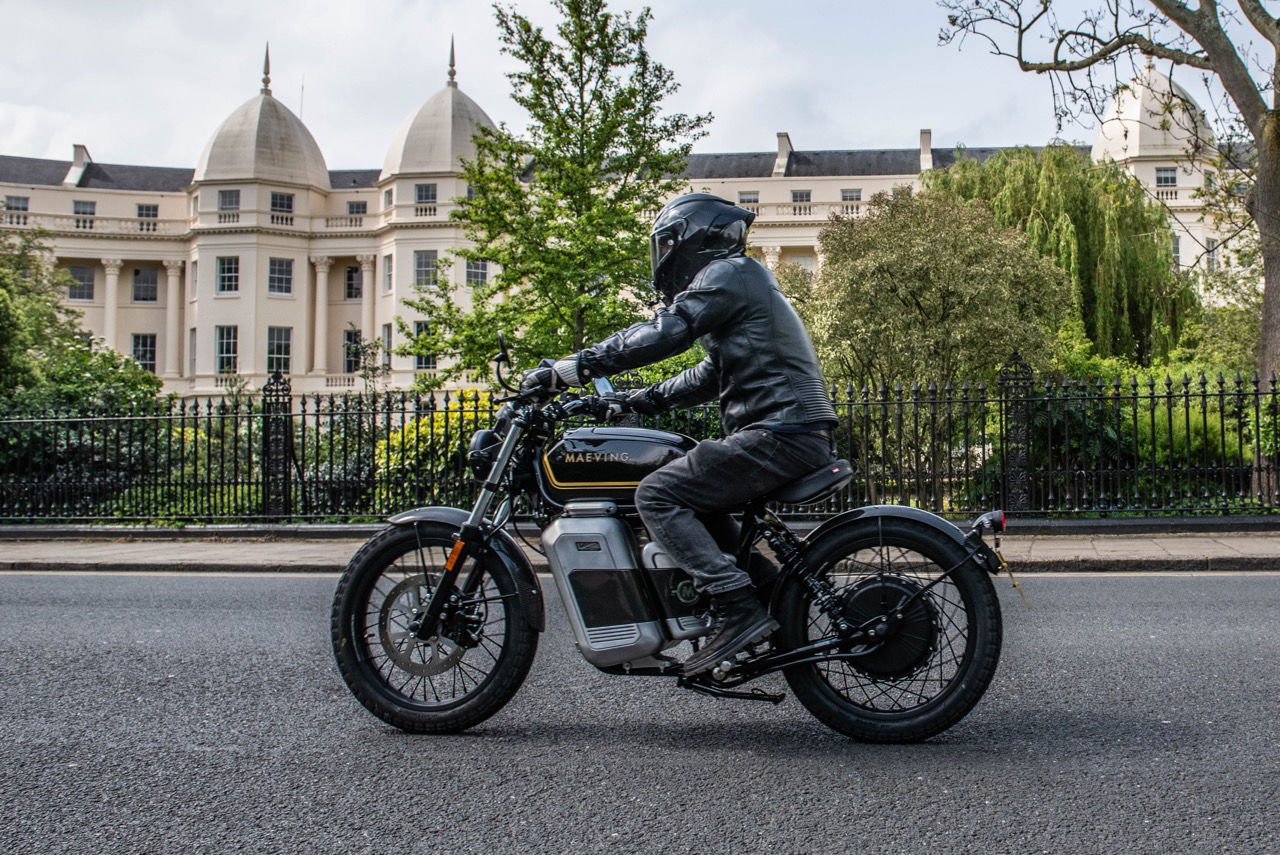
It’s also worth mentioning that there is no regenerative braking on the RM1S, which I quizzed Maeving’s co-founder Will Stirrup about. The reason for not adding it was down to the slim returns the system would bring on a bike as light as this. He reckoned on about a five per cent saving, but the system is quite complex and costly to include. Because of the lack of any form of rolling resistance, I’m riding the RM1S quite unlike any other electric bike I’ve tested. Instead of accelerating to a desired speed and then rolling back the throttle slightly to maintain that velocity, I find I’m spending much of my time coasting on a completely closed throttle once I’ve reached the speed I need. Only once again opening the throttle when the speed gets too low.
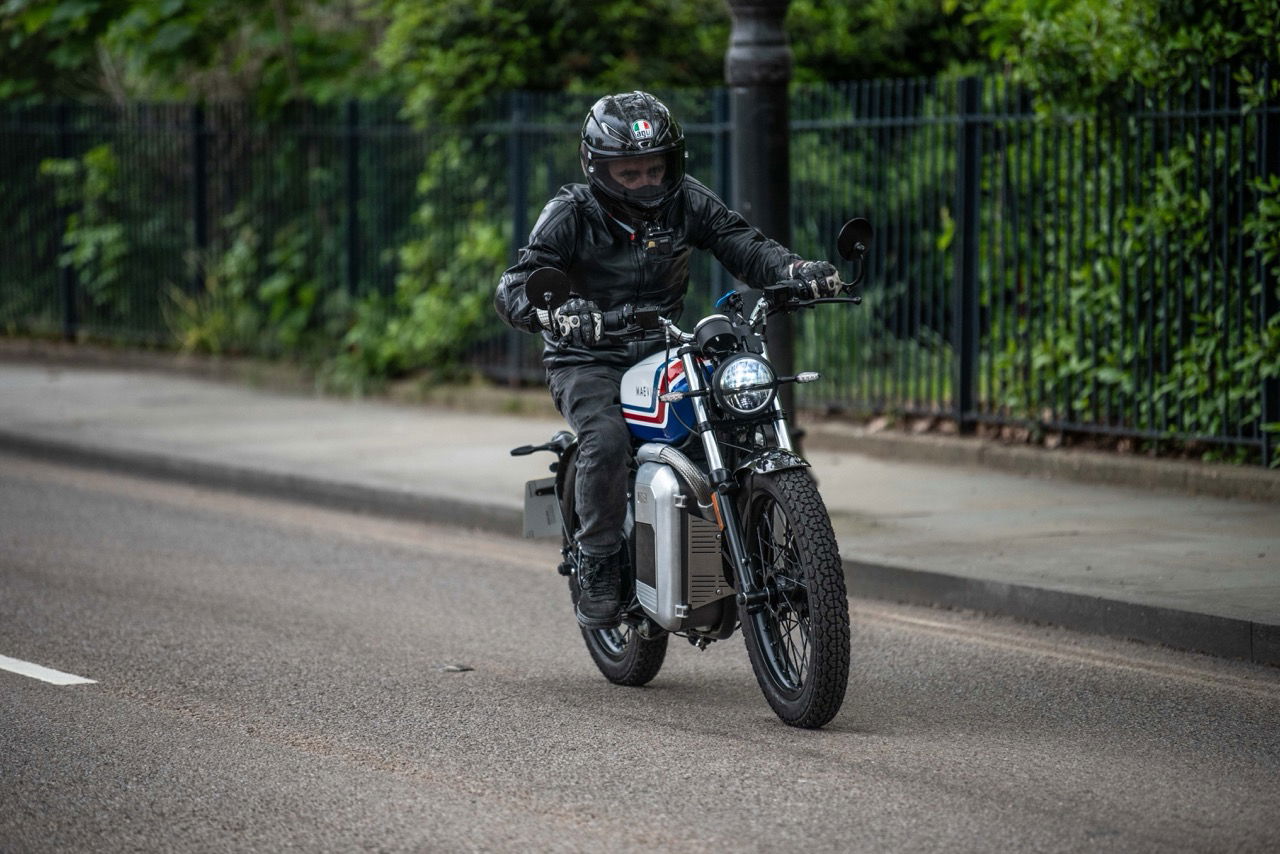
Now we’ve reached some of the more quiet roads that circumnavigate Regents Park and we’re able to get the bike up above 30mph. The handling at these speeds is good, and the bike feels nicely stable and with a lovely balance that makes it very easy to ride. I am finding the ride to be quite harsh over potholes and cobbles, though. All the bikes we are riding have some slinky K-Tech Racing adjustable rear shocks (a £725 option) and while they look resplendent in CNC aluminium, a little less preload or a softer spring would be nice. Winding some compression damping out of the rear shock does help a little, but if you’re buying one of these and opting for the K-Techs, spend a day getting them dialled in just right to help save your lower spine. I did also manage to sample the RM1S with stock shocks, and while the comfort was better and it was less crashing over bumps, it lacked the composure of the more classy K-Tech-equipped bike.

The optional K-Tech rear shock absorber
The rest of the bike's comfort is okay: there’s a bit of a reach to the bars over the long faux-fuel tank, the pegs are nicely positioned and it does feel roomy, despite looking small. The only real negative I can come up with is the seat comfort. It’s a heavily contoured seat and quite small, meaning you only have one position you can get into and no opportunity to shuffle about to alleviate a numb bum if you have one. That said, we’ve been out on the bikes for around three hours now, probably a bit longer than the average RM1S owner would plan to ride for.
How does it handle cruising on a dual-carriageway?

Surprisingly okay, is the answer. Progress from 45mph and up is fairly leisurely, but if you’re sat at 55mph you’ll still have enough in reserve to get past slower vehicles without becoming a complete rolling roadblock. I tried to get the RM1S up to its claimed top speed, although could only nudge 65mph before catching up with traffic again. It did feel like 70 or maybe 75mph (if you fully tuck!) is on the cards though.
Should I buy a Maeving RM1S
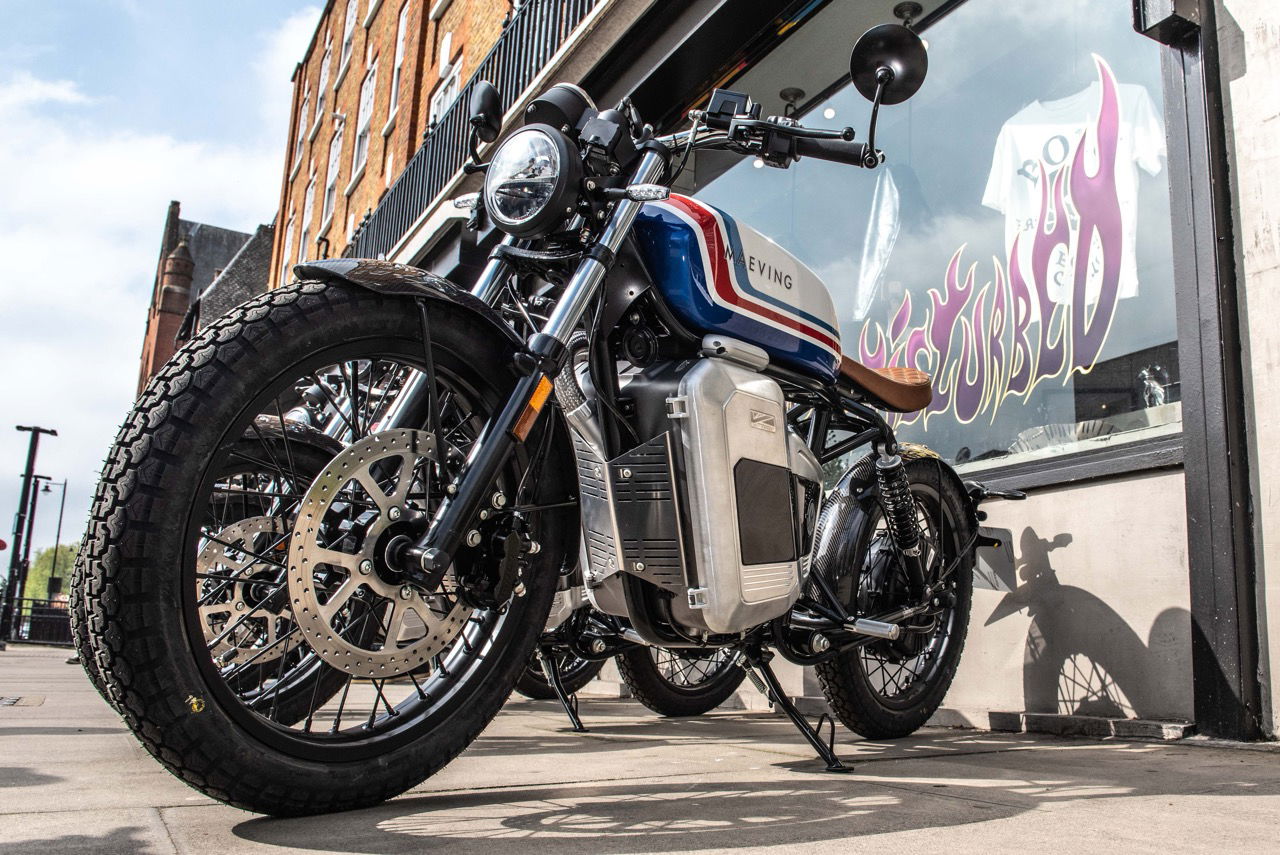
It's definitely got kerb appeal!
As this was my first taste of Maeving machinery (I missed the launch of the RM1 sadly) I didn’t really have a relative benchmark with the lower powered bike. I do, though, have extensive experience of geared and twist-and-go petrol 125cc bikes, which are the natural competitor to this new bike. On that front, the Maeving stacks up well. It seems to accelerate like a twist-and-go 125 scoot, and while it might not have the top speed of either a scooter or a geared bike, in this setting it works perfectly well.
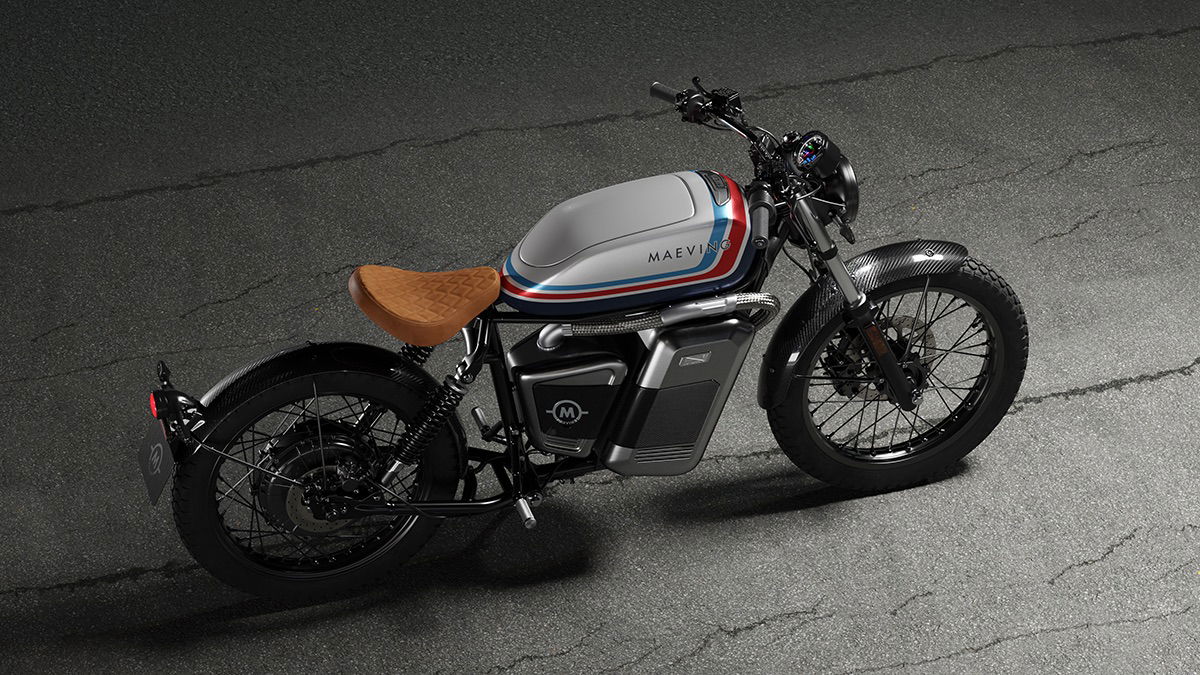
The Gilbert paint scheme of the RM1S
The price will likely be a stumbling block for some, and it’s a valid point. The Peugeot PM125, for instance, would be a challenger to the RM1S, although the Peugeot comes in at a cut-price £2,999, less than half the price of the Maeving. That’s a significant chunk of change, although there are some - and this is backed up by strong sales in 2023 - that simply want to get on a bike, and they want that bike to be a Maeving.
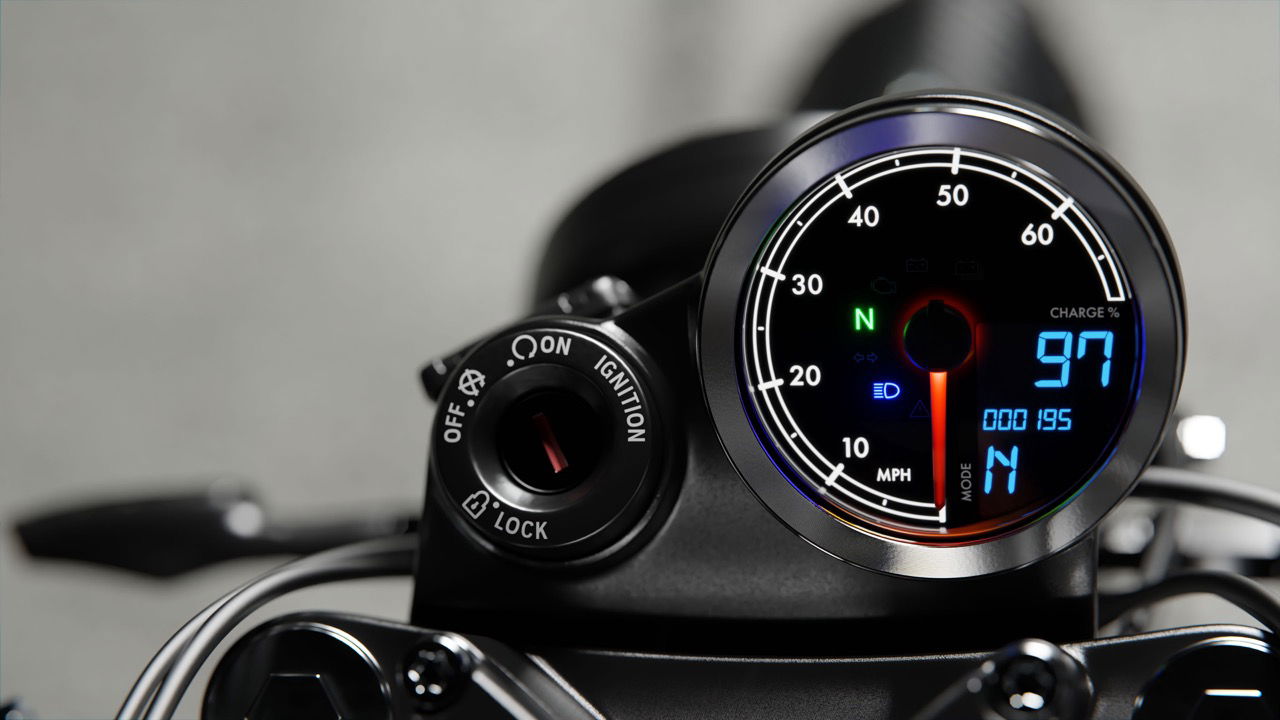
Take the Maeving away from the petrol-powered competition though and the picture is much rosier for the little Midlands-made electric. It’s cheaper than both the £8,450 BMW CE 02, and the £7,799 Kawasaki ZE1. It also trumps both of those on top speed and range, and neither of them has a lockable storage compartment as standard, either.
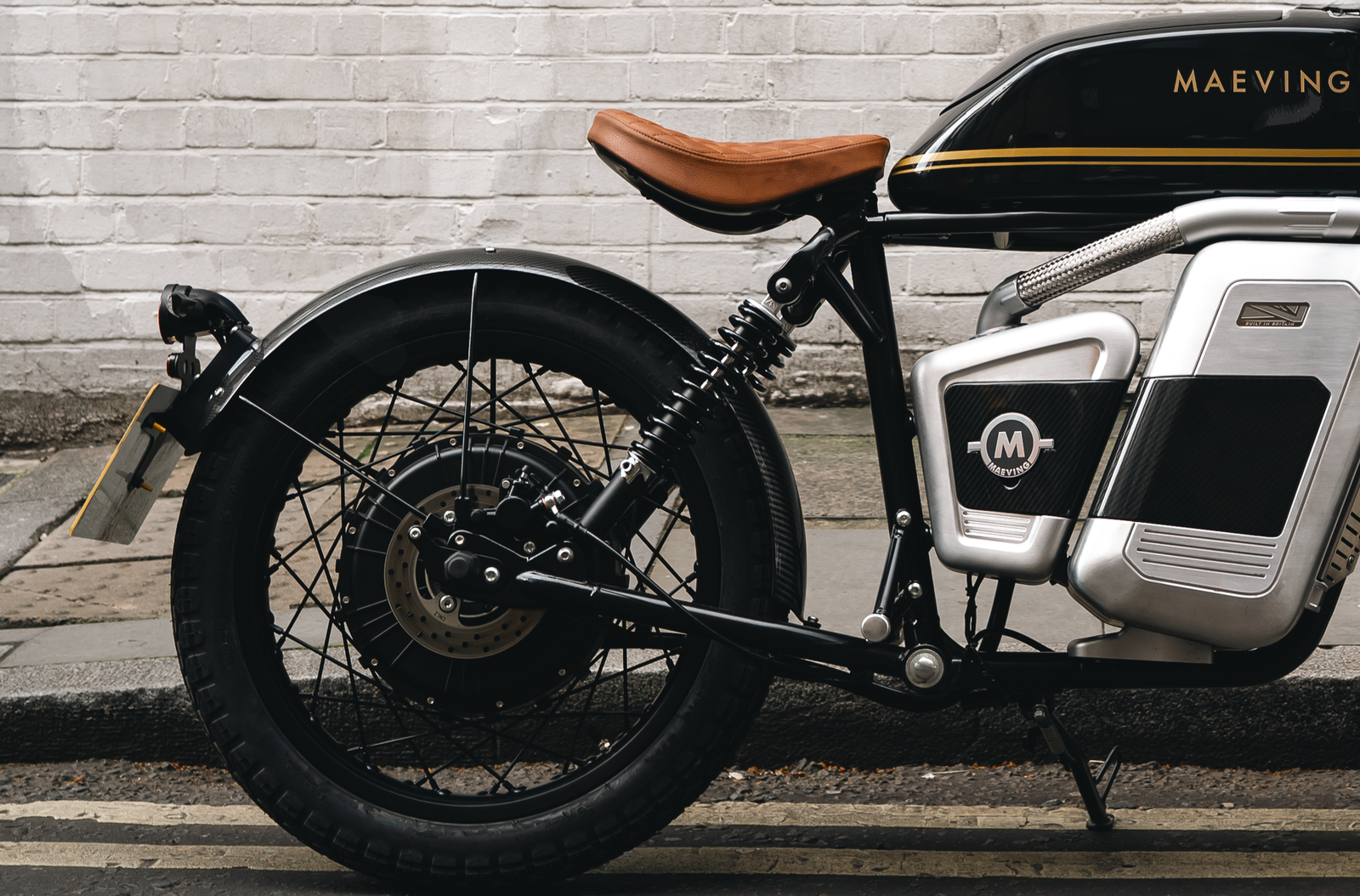
Some of those buying from the Coventrian manufacturer are also probably quite happy to be buying a bike that is designed, developed, and manufactured in the UK. And that’s quite a big news story. 2024 has already seen two well known electric bike makers go belly up: Arc and Cake. The fact that we have a wholly British brand in this space making bikes that perform well in the sales charts really is something we need to shout about.
Maeving is also turning out a quality product with a very premium feel to it. From the knurled footpegs that could have come straight off an old Vincent race bike, to the lovely paint finish and nicely applied decals. Everything about the bike looks good and feels good. And that’s probably more important to the average Maeving customer than how the bike actually rides.
To check out the full range of bikes from Meaving, head to the official website.
Maeving RM1S spec
Motor | Hub-mounted |
Power | 7.0 kW (9.3bhp) continuous power 10.5 kW (14bhp) peak power |
Battery | 5.46 kWh (2 x 2.73kWh batteries) |
Battery weight | 15kg |
Range | 80-miles (claimed) |
Top speed | 70mph (claimed) |
Licence type | CBT and provisional |
Suspension (F) | 37mm non-adjustable forks 110mm travel |
Suspension (R) | Twin RSU with pre-load adjustment 80mm travel |
Brake (F) | Single disc brake 240 mm |
Brake (R/CBS) | Single disc brake 180 mm (40% front / 60% rear split) |
Weight | 133kg (ready to ride) |
Seat height | 785mm |


